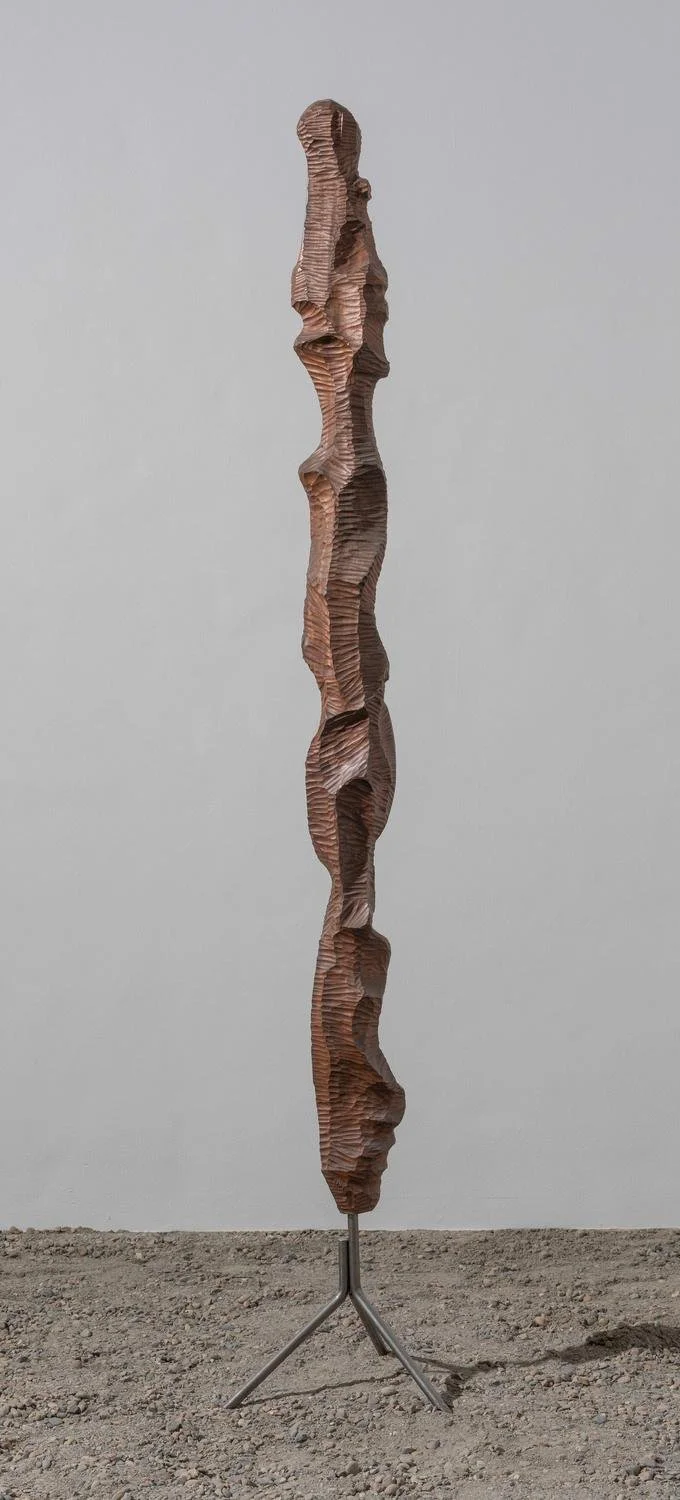Kirstine roepstorff
Kirstine Roepstorff (b. 1972, Denmark) is a Danish visual artist who moves between collage and sculpture, as well as producing books. She lives and works in Denmark. Roepstorff pursued her education at the Royal Danish Academy of Fine Arts from 1994 to 2001 and Rutgers University, Mason School of Fine Art in the USA in 2000.
Roepstorff has exhibited widely and presented solo exhibitions both in Denmark and abroad. In 2017, she represented Denmark in the Danish Pavilion at the 57th International Art Biennale in Venice with the project ‘Influenza. Theater of Flowing Darkness.’ Her works are included in collections such as The Museum of Modern Art in New York, The Saatchi Gallery in London and the Norwegian Museum of Art. She has created several large-scale public art projects including the “LIGHTNING ROD” Sculptural installation for Frieze Sculpture in Regent’s Park, UK (2024)“; BIB AU NATURA” Landart installation in Randers, DK (2023); “Cosmic Dance” installation in the town square of Fjelhamar, NO (2022); “HYDRA” Multi-story Parking-house in Fredericia, DK (2020). Roepstorff is a Board Member of Jutland Art Academy, appointed by Akademiraadet (Danish Art Council).
Roepstorff's works investigates the boundaries between our inner and outer worlds, and how we as humans are connected to nature and the broader universe.
In her own words:
“My public works have a large element of playfulness and somatic experience, where you may be distracted, inspired or tricked to get a reminding hunch of the constant dialogue between the cosmic and earthly, they aim for people to connect with each other and get in touch with the sense of ourselves. The paradox and collaboration between our physical world and not-so-physical worlds are often at play in the public art works as well as in the studio scale works. The finite and the infinite, the body matters and the spirit matters. Especially today, where we have become so intimate with our technology, it makes a lot of sense to create somewhere where we can meet in a physical, sensory world, and from here create an inter-human reflection room. In this world of growing virtuality, physical art has an overwhelming potential’







